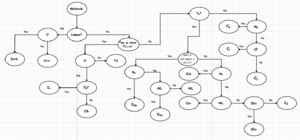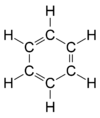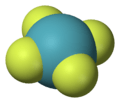Molecular symmetry facts for kids
Molecular symmetry is a basic idea in chemistry. It is about the symmetry of molecules. It puts molecules into groups according to their symmetry. It can predict or explain many of a molecule's chemical properties.
Chemists study symmetry to explain how crystals are made up and how chemicals react. The molecular symmetry of the reactants help predict how the product of the reaction is made up and the energy needed for the reaction.
Molecular symmetry can be studied several different ways. Group theory is the most popular idea. Group theory is also useful in studying the symmetry of molecular orbitals. This is used in the Hückel method, ligand field theory, and the Woodward–Hoffmann rules. Another idea on a larger scale is the use of crystal systems to describe crystallographic symmetry in bulk materials.
Scientists find molecular symmetry by using X-ray crystallography and other forms of spectroscopy. Spectroscopic notation is based on facts taken from molecular symmetry.
Contents
Historical background
Physicist Hans Bethe used characters of point group operations in his study of ligand field theory in 1929. Eugene Wigner used group theory to explain the selection rules of atomic spectroscopy. The first character tables were compiled by László Tisza (1933), in connection to vibrational spectra. Robert Mulliken was the first to publish character tables in English (1933). E. Bright Wilson used them in 1934 to predict the symmetry of vibrational normal modes. The complete set of 32 crystallographic point groups was published in 1936 by Rosenthal and Murphy.
Symmetry concepts
Mathematical group theory has been adapted to study of symmetry in molecules.
Elements
The symmetry of a molecule can be described by 5 types of symmetry elements.
- Symmetry axis: an axis around which a rotation by
 results in a molecule that appears identical to the molecule before rotation. This is also called an n-fold rotational axis and is shortened to Cn. Examples are the C2 in water and the C3 in ammonia. A molecule can have more than one symmetry axis; the one with the highest n is called the principal axis, and by convention is given the z-axis in a Cartesian coordinate system.
results in a molecule that appears identical to the molecule before rotation. This is also called an n-fold rotational axis and is shortened to Cn. Examples are the C2 in water and the C3 in ammonia. A molecule can have more than one symmetry axis; the one with the highest n is called the principal axis, and by convention is given the z-axis in a Cartesian coordinate system. - Plane of symmetry: a plane of reflection through which an identical copy of the original molecule is given. This is also called a mirror plane and abbreviated σ. Water has two of them: one in the plane of the molecule itself and one perpendicular (at right angles) to it. A symmetry plane parallel with the principal axis is dubbed vertical (σv) and one perpendicular to it horizontal (σh). A third type of symmetry plane exists: if a vertical symmetry plane additionally bisects the angle between two 2-fold rotation axes perpendicular to the principal axis, the plane is dubbed dihedral (σd). A symmetry plane can also be identified by its Cartesian orientation, e.g., (xz) or (yz).
- Center of symmetry or inversion center, shortened to i. A molecule has a center of symmetry when, for any atom in the molecule, an identical atom exists diametrically opposite this center an equal distance from it. There may or may not be an atom at the center. Examples are xenon tetrafluoride (XeF4) where the inversion center is at the Xe atom, and benzene (C6H6) where the inversion center is at the center of the ring.
- Rotation-reflection axis: an axis around which a rotation by
 , followed by a reflection in a plane perpendicular to it, leaves the molecule unchanged. Also called an n-fold improper rotation axis, it is shortened to Sn, with n necessarily even. Examples are present in tetrahedral silicon tetrafluoride, with three S4 axes, and the staggered conformation of ethane with one S6 axis.
, followed by a reflection in a plane perpendicular to it, leaves the molecule unchanged. Also called an n-fold improper rotation axis, it is shortened to Sn, with n necessarily even. Examples are present in tetrahedral silicon tetrafluoride, with three S4 axes, and the staggered conformation of ethane with one S6 axis. - Identity (also E), from the German 'Einheit' meaning Unity. It is called "Identity" because it is like the number one (unity) in multiplication. (When a number is multiplied by one, the answer is the original number.) This symmetry element means no change. Every molecule has this element. The identity symmetry element helps chemists use mathematical group theory.
Operations
Each of the five symmetry elements has a symmetry operation. People use a caret symbol (^) to talk about the operation rather than the symmetry element. So, Ĉn is the rotation of a molecule around an axis and Ê is the identity operation. A symmetry element can have more than one symmetry operation associated with it. Since C1 is equivalent to E, S1 to σ and S2 to i, all symmetry operations can be classified as either proper or improper rotations.
Point groups
A point group is a set of symmetry operations forming a mathematical group, for which at least one point remains fixed under all operations of the group. A crystallographic point group is a point group which will work with translational symmetry in three dimensions. There are a total of 32 crystallographic point groups, 30 of which are relevant to chemistry. Scientists use Schoenflies notation to classify point groups.
Group theory
Mathematics define a group. A set of symmetry operations form a group when:
- the result of consecutive application (composition) of any two operations is also a member of the group (closure).
- the application of the operations is associative: A(BC) = (AB)C
- the group contains the identity operation, denoted E, such that AE = EA = A for any operation A in the group.
- For every operation A in the group, there is an inverse element A−1 in the group, for which AA−1 = A−1A = E
The order of a group is the number of symmetry operations for that group.
For example, the point group for the water molecule is C2v, with symmetry operations E, C2, σv and σv'. Its order is thus 4. Each operation is its own inverse. As an example of closure, a C2 rotation followed by a σv reflection is seen to be a σv' symmetry operation: σv*C2 = σv'. (Note that "Operation A followed by B to form C" is written BA = C).
Another example is the ammonia molecule, which is pyramidal and contains a three-fold rotation axis as well as three mirror planes at an angle of 120° to each other. Each mirror plane contains an N-H bond and bisects the H-N-H bond angle opposite to that bond. Thus ammonia molecule belongs to the C3v point group which has order 6: an identity element E, two rotation operations C3 and C32, and three mirror reflections σv, σv' and σv".
Common point groups
The following table contains a list of point groups labelled using the Schoenflies notation, which is common in chemistry and molecular spectroscopy. The description of structure includes common shapes of molecules, which can be explained by the VSEPR model.
| Point group | Symmetry operations | Simple description of typical geometry | Example 1 | Example 2 | Example 3 | |
| C1 | E | no symmetry, chiral | 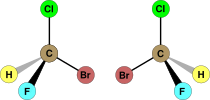 bromochlorofluoromethane (both enantiomers shown) |
 lysergic acid |
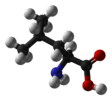 L-leucine and most other α-amino acids except glycine |
|
| Cs | E σh | mirror plane, no other symmetry | 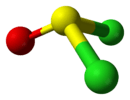 thionyl chloride |
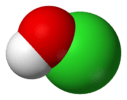 hypochlorous acid |
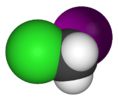 chloroiodomethane |
|
| Ci | E i | inversion center | 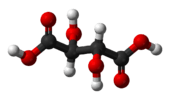 meso-tartaric acid |
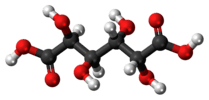 mucic acid (meso-galactaric acid) |
(S,R) 1,2-dibromo-1,2-dichloroethane (anti conformer) | |
| C∞v | E 2C∞ ∞σv | linear | 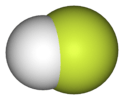 hydrogen fluoride (and all other heteronuclear diatomic molecules) |
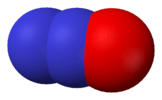 nitrous oxide (dinitrogen monoxide) |
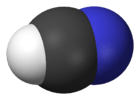 hydrocyanic acid (hydrogen cyanide) |
|
| D∞h | E 2C∞ ∞σi i 2S∞ ∞C2 | linear with inversion center | 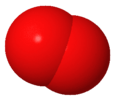 oxygen (and all other homonuclear diatomic molecules) |
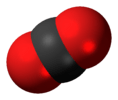 carbon dioxide |
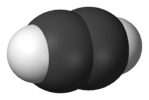 acetylene (ethyne) |
|
| C2 | E C2 | "open book geometry," chiral | 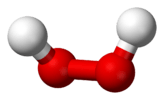 hydrogen peroxide |
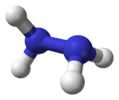 hydrazine |
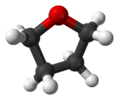 tetrahydrofuran (twist conformation) |
|
| C3 | E C3 | propeller, chiral | 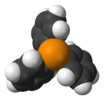 triphenylphosphine |
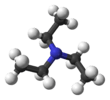 triethylamine |
 phosphoric acid |
|
| C2h | E C2 i σh | planar with inversion center |  trans-1,2-dichloroethylene |
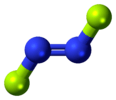 trans-dinitrogen difluoride |
 trans-azobenzene |
|
| C3h | E C3 C32 σh S3 S35 | propeller | 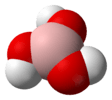 boric acid |
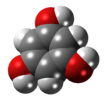 phloroglucinol (1,3,5-trihydroxybenzene) |
||
| C2v | E C2 σv(xz) σv'(yz) | angular (H2O) or see-saw (SF4) | 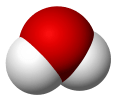 water |
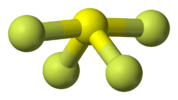 sulfur tetrafluoride |
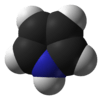 pyrrole |
|
| C3v | E 2C3 3σv | trigonal pyramidal or tetrahedral | 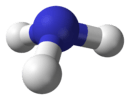 ammonia |
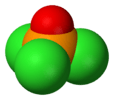 phosphorus oxychloride |
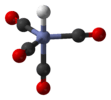 cobalt tetracarbonyl hydride, HCo(CO)4 |
|
| C4v | E 2C4 C2 2σv 2σd | square pyramidal | 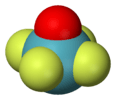 xenon oxytetrafluoride |
 pentaborane(9), B5H9 |
 nitroprusside anion [Fe(CN)5(NO)]2− |
|
| C5v | E 2C5 2C52 5σv | 'milking stool' complex |  Ni(C5H5)(NO) |
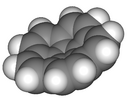 corannulene |
||
| D2 | E C2(x) C2(y) C2(z) | twist, chiral | 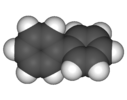 biphenyl (skew conformation) |
 twistane (C10H16) |
cyclohexane twist conformation | |
| D3 | E C3(z) 3C2 | triple helix, chiral |  Tris(ethylenediamine)cobalt(III) cation |
 tris(oxalato)iron(III) anion |
||
| D2h | E C2(z) C2(y) C2(x) i σ(xy) σ(xz) σ(yz) | planar with inversion center |  ethylene |
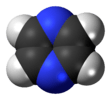 pyrazine |
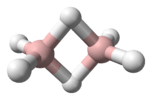 diborane |
|
| D3h | E C3 3C2 σh 2S3 3σv | trigonal planar or trigonal bipyramidal | 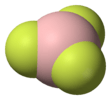 boron trifluoride |
 phosphorus pentachloride |
 cyclopropane |
|
| D4h | E 2C4 C2 2C2' 2C2 i 2S4 σh 2σv 2σd | square planar | 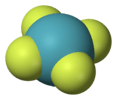 xenon tetrafluoride |
 octachlorodimolybdate(II) anion |
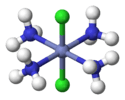 Trans-[CoIII(NH3)4Cl2]+ (excluding H atoms) |
|
| D5h | E 2C5 2C52 5C2 σh 2S5 2S53 5σv | pentagonal | 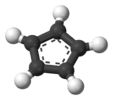 cyclopentadienyl anion |
 ruthenocene |
 C70 |
|
| D6h | E 2C6 2C3 C2 3C2' 3C2‘’ i 2S3 2S6 σh 3σd 3σv | hexagonal | 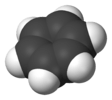 benzene |
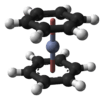 bis(benzene)chromium |
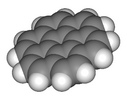 coronene (C24H12) |
|
| D7h | E C7 S7 7C2 σh 7σv | heptagonal | 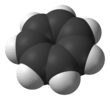 tropylium (C7H7+) cation |
|||
| D8h | E C8 C4 C2 S8 i 8C2 σh 4σv 4σd | octagonal | 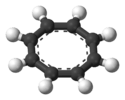 cyclooctatetraenide (C8H82−) anion |
 uranocene |
||
| D2d | E 2S4 C2 2C2' 2σd | 90° twist | 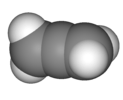 allene |
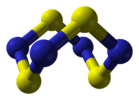 tetrasulfur tetranitride |
 diborane(4) (excited state) |
|
| D3d | E 2C3 3C2 i 2S6 3σd | 60° twist | 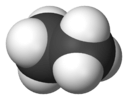 ethane (staggered rotamer) |
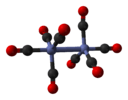 dicobalt octacarbonyl (non-bridged isomer) |
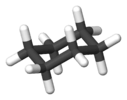 cyclohexane chair conformation |
|
| D4d | E 2S8 2C4 2S83 C2 4C2' 4σd | 45° twist | 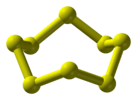 sulfur (crown conformation of S8) |
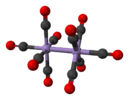 dimanganese decacarbonyl (staggered rotamer) |
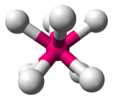 octafluoroxenate ion (idealised geometry) |
|
| D5d | E 2C5 2C52 5C2 i 3S103 2S10 5σd | 36° twist | 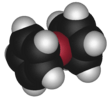 ferrocene (staggered rotamer) |
|||
| S4 | E 2S4 C2 |  tetraphenylborate anion |
||||
| Td | E 8C3 3C2 6S4 6σd | tetrahedral |  methane |
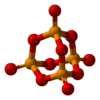 phosphorus pentoxide |
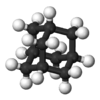 adamantane |
|
| Oh | E 8C3 6C2 6C4 3C2 i 6S4 8S6 3σh 6σd | octahedral or cubic |  sulfur hexafluoride |
 molybdenum hexacarbonyl |
 cubane |
|
| Ih | E 12C5 12C52 20C3 15C2 i 12S10 12S103 20S6 15σ | icosahedral or dodecahedral |  Buckminsterfullerene |
 dodecaborate anion |
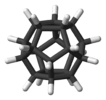 dodecahedrane |
Representations
Symmetry operations can be written in many ways. A good way to write them is by using matrices. For any vector representing a point in Cartesian coordinates, left-multiplying it gives the new place of the point transformed by the symmetry operation. Composition of operations is done by matrix multiplication. In the C2v example this is:
Although an infinite (going on forever) number of such representations (ways of showing things) exist, the irreducible representations (or "irreps") of the group are commonly used, as all other representations of the group can be described as a linear combination of the irreducible representations. (The irreps span the vector space of the symmetry operations.) Chemists use the irreps to sort the symmetry groups and to talk about their properties.
Character tables
For each point group, a character table summarizes information on its symmetry operations and on its irreducible representations. The tables are square because there are always equal numbers of irreducible representations and groups of symmetry operations.
The table itself is made of characters which show how a particular irreducible representation changes when a particular symmetry operation is applied (put to it). Any symmetry operation in a molecule's point group acting on the molecule itself will leave it unchanged. But for acting on a general entity (thing), such as a vector or an orbital, this does not have to be what happens. The vector could change sign or direction, and the orbital could change type. For simple point groups, the values are either 1 or -1: 1 means that the sign or phase (of the vector or orbital) is unchanged by the symmetry operation (symmetric) and -1 denotes a sign change (asymmetric).
The representations are labeled according to a set of conventions:
- A, when rotation around the principal axis is symmetrical
- B, when rotation around the principal axis is asymmetrical
- E and T are doubly and triply degenerate representations, respectively
- when the point group has an inversion center, the subscript g (German: gerade or even) signals no change in sign, and the subscript u (ungerade or uneven) a change in sign, with respect to inversion.
- with point groups C∞v and D∞h the symbols are borrowed from angular momentum description: Σ, Π, Δ.
The tables also tell the Cartesian basis vectors, rotations about them, and quadratic functions of them transformed by the symmetry operations of the group. The table also shows which irreducible representation transforms in the same way (on the right hand side of the tables). Chemists use this because chemically important orbitals (in particular p and d orbitals) have the same symmetries as these entities.
The character table for the C2v symmetry point group is given below:
| C2v | E | C2 | σv(xz) | σv'(yz) | ||
|---|---|---|---|---|---|---|
| A1 | 1 | 1 | 1 | 1 | z | x2, y2, z2 |
| A2 | 1 | 1 | -1 | -1 | Rz | xy |
| B1 | 1 | -1 | 1 | -1 | x, Ry | xz |
| B2 | 1 | -1 | -1 | 1 | y, Rx | yz |
For example, water (H2O) which has the C2v symmetry described above. The 2px orbital of oxygen is oriented perpendicular to the plane of the molecule and switches sign with a C2 and a σv'(yz) operation, but remains unchanged with the other two operations (obviously, the character for the identity operation is always +1). This orbital's character set is thus {1, -1, 1, -1}, corresponding to the B1 irreducible representation. Similarly, the 2pz orbital is seen to have the symmetry of the A1 irreducible representation, 2py B2, and the 3dxy orbital A2. These assignments and others are in the rightmost two columns of the table.
Images for kids
See also
 In Spanish: Simetría molecular para niños
In Spanish: Simetría molecular para niños


